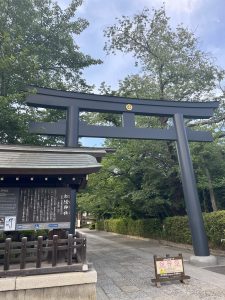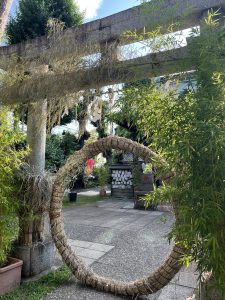Today I visited Shoin Shrine in Setagaya, Tokyo.
There was a chinowa—a sacred ring of grass—set up for Nagoshi no Oharae, the summer purification ritual. I walked through it and offered a hitogata, a paper figure used to symbolically absorb impurities and be ritually purified.
I actually did the same thing at a nearby shrine yesterday. Is it okay to do it at multiple shrines? Of course it is.
Japanese deities are not small-minded.
In Japan, we don’t have just one god—we believe in Yaoyorozu no Kami, eight million gods. So visiting different shrines and connecting with various deities is a natural and welcome thing.
I visit Shoin Shrine once a month. It’s a beautiful, well-kept, and sacred space that always feels clear and refreshing.
Why do I go so often? Because I want to read the words of Shoin-sensei (Yoshida Shoin) posted near the shrine.
His writings are widely available in books, so there’s no real need to go just for that—but honestly, it gives me an excuse to return. Somehow, reading his words there feels different.
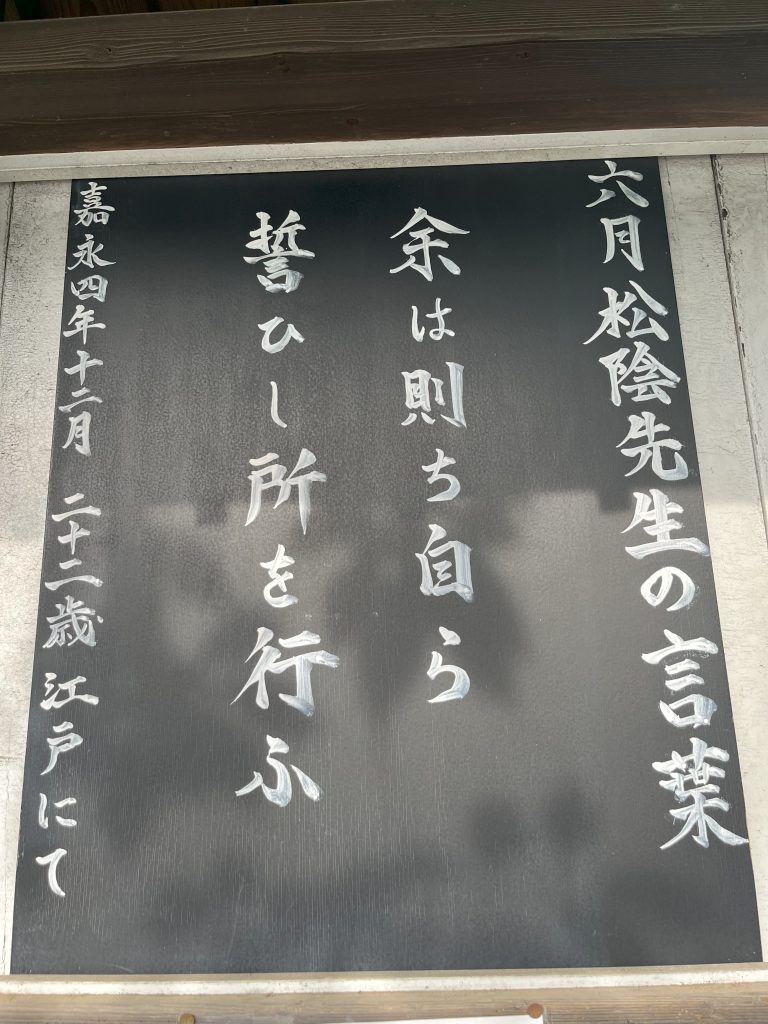
This phrase reflects Shoin’s unwavering commitment to carry out not what he promised to others, but what he vowed to himself.
It embodies a spirit of self-discipline and personal integrity—acting not out of obligation, but from inner conviction.
Yoshida Shoin was a thinker and educator who looked to Japan’s future in the final years of the Edo period.
In a small town called Hagi, he opened a tiny private school called Shōka Sonjuku, where he taught young men who would go on to lead the Meiji Restoration.
His students included figures like Takasugi Shinsaku, Ito Hirobumi, and Yamagata Aritomo—young men who inherited his ideals and helped reshape the nation.
Shoin-sensei himself died very young—executed at just 30 years old.
But his spirit lived on in his students. They gave their lives to build modern Japan, and thanks to their efforts, Japan became the only non-Western country in Asia that was not colonized by the Western powers.
That is an incredibly rare event in world history.
A nation of people of color was able to stay independent and enter the modern world on its own terms.
Behind that success were thinkers and teachers like Yoshida Shoin.
Shoin-sensei was, honestly, extreme—both in his ideas and in his actions. You might say he had a screw loose.
But every part of his intensity was focused on one thing: “How can I make Japan better?” He didn’t think about himself at all. In fact, he didn’t think about himself enough.
One of the most striking examples of this is the so-called Black Ship Stowaway Incident.
When Commodore Perry’s fleet arrived at Uraga, Shoin tried to sneak aboard one of the American ships.
He wanted to go to the United States to see the world firsthand and bring knowledge back for the future of Japan.
It was an act of desperation, determination—and danger. He took a small boat into the dark sea and approached the ship, hoping to be allowed on.
Of course, he was caught. Under normal circumstances, this kind of act could easily result in the death penalty.
But there’s a story—almost a legend—that Perry was so moved by Shoin’s courage and idealism that he spoke well of him, saying something like:
“A young man who risks his life for the good of his country—Japan has a bright future.”
It’s even said that Perry asked the shogunate to treat him with leniency.
In the end, Shoin was not executed immediately. He was sent back to Hagi and placed under house arrest.
We don’t know for certain whether Perry’s intervention truly happened. There’s no definitive written record.
But the fact that such a story has been told for generations shows how powerful Shoin’s actions were.
This shrine itself was founded after the Meiji Restoration, when Shoin’s students searched for his remains, reburied him with respect, and established this site in his honor.
So it’s not just a shrine for a famous person—it’s a place where the story of those who inherited his ideals still lives quietly on.
Notes for International Readers:
- Nagoshi no Oharae: A Shinto ritual held in June to cleanse impurities from the first half of the year.
- Chinowa: A large ring of sacred grass, walked through for purification.
- Hitogata: A paper doll or figure used to symbolically absorb personal misfortunes and sins.
- Yoshida Shoin: A key figure in late Edo-period Japan, known for his radical ideas and influence on the Meiji Restoration.
- Black Ships: The American fleet led by Commodore Perry that forced Japan to open its borders in the 1850s.
- Meiji Restoration: A political and social revolution that modernized Japan and ended centuries of feudal rule.
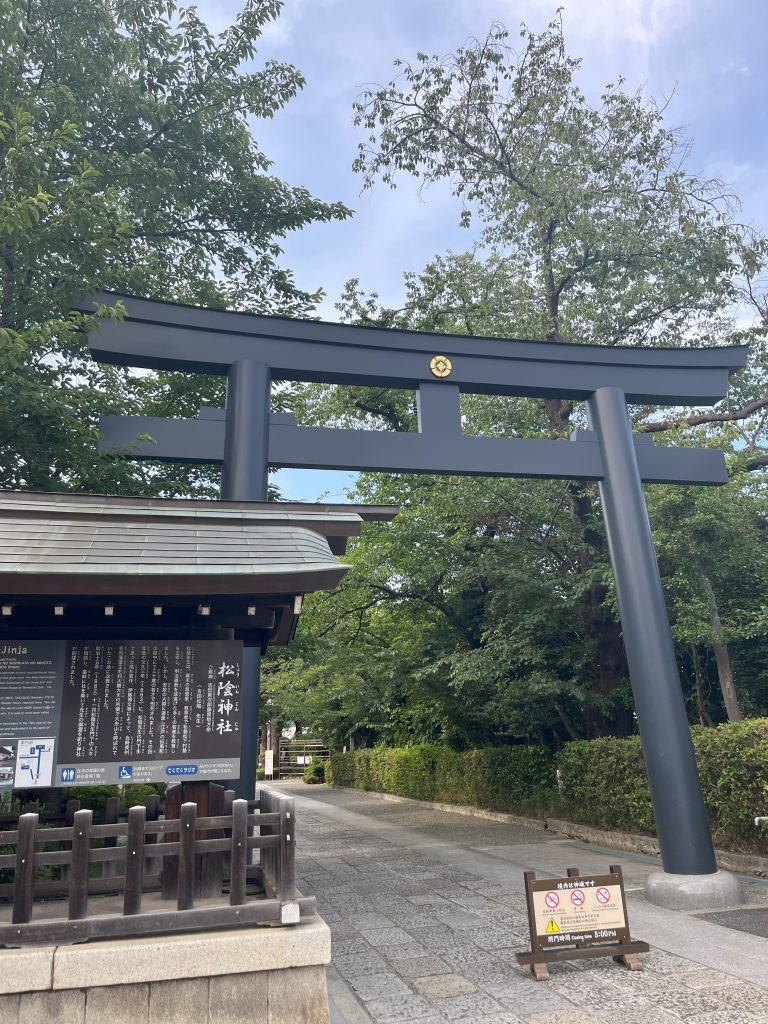
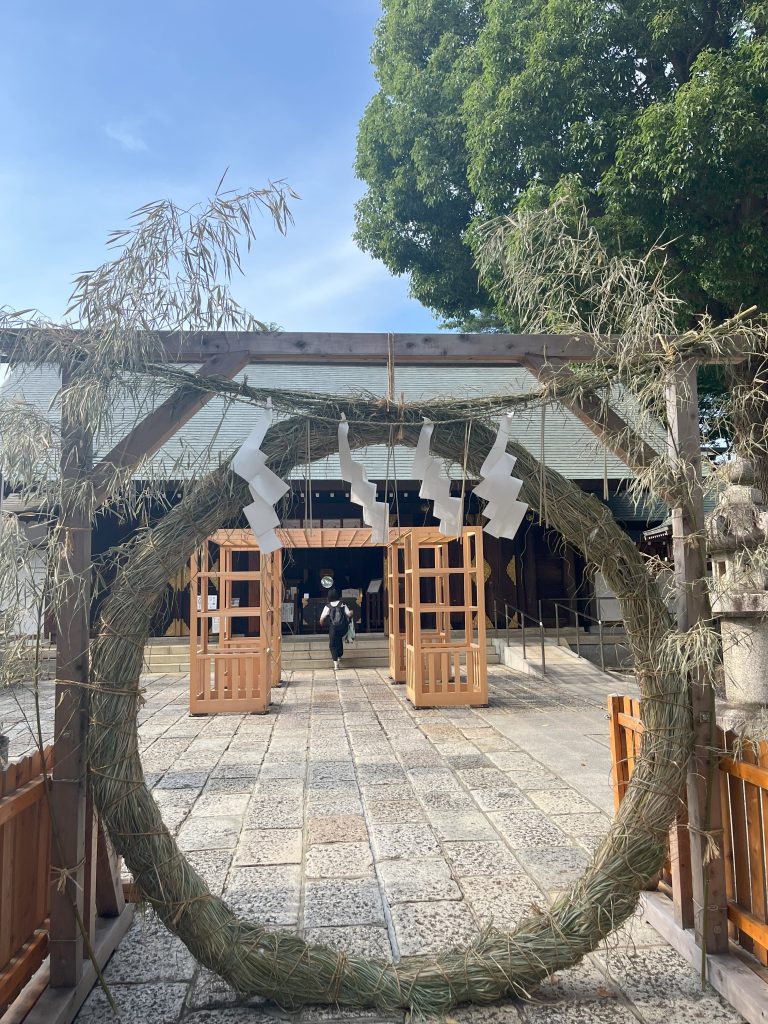
If you enjoyed this post, feel free to support my writing here:
☕ Buy Me a Coffee

